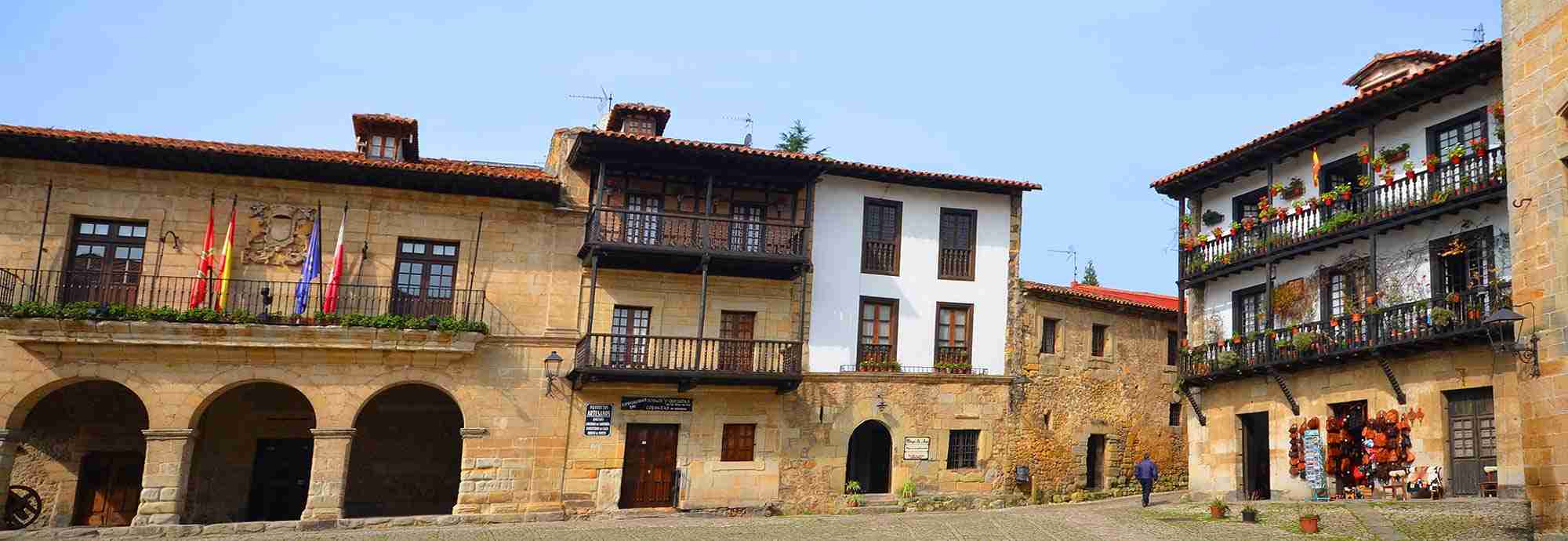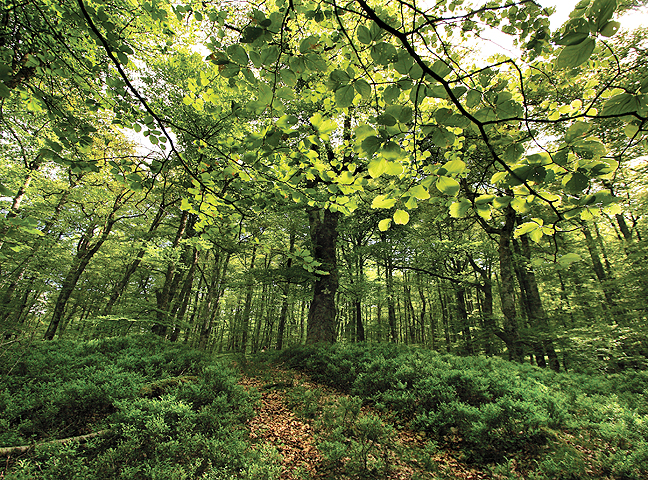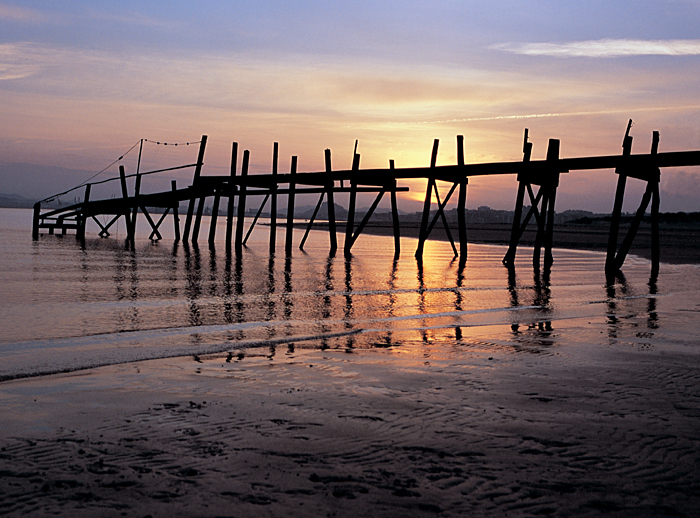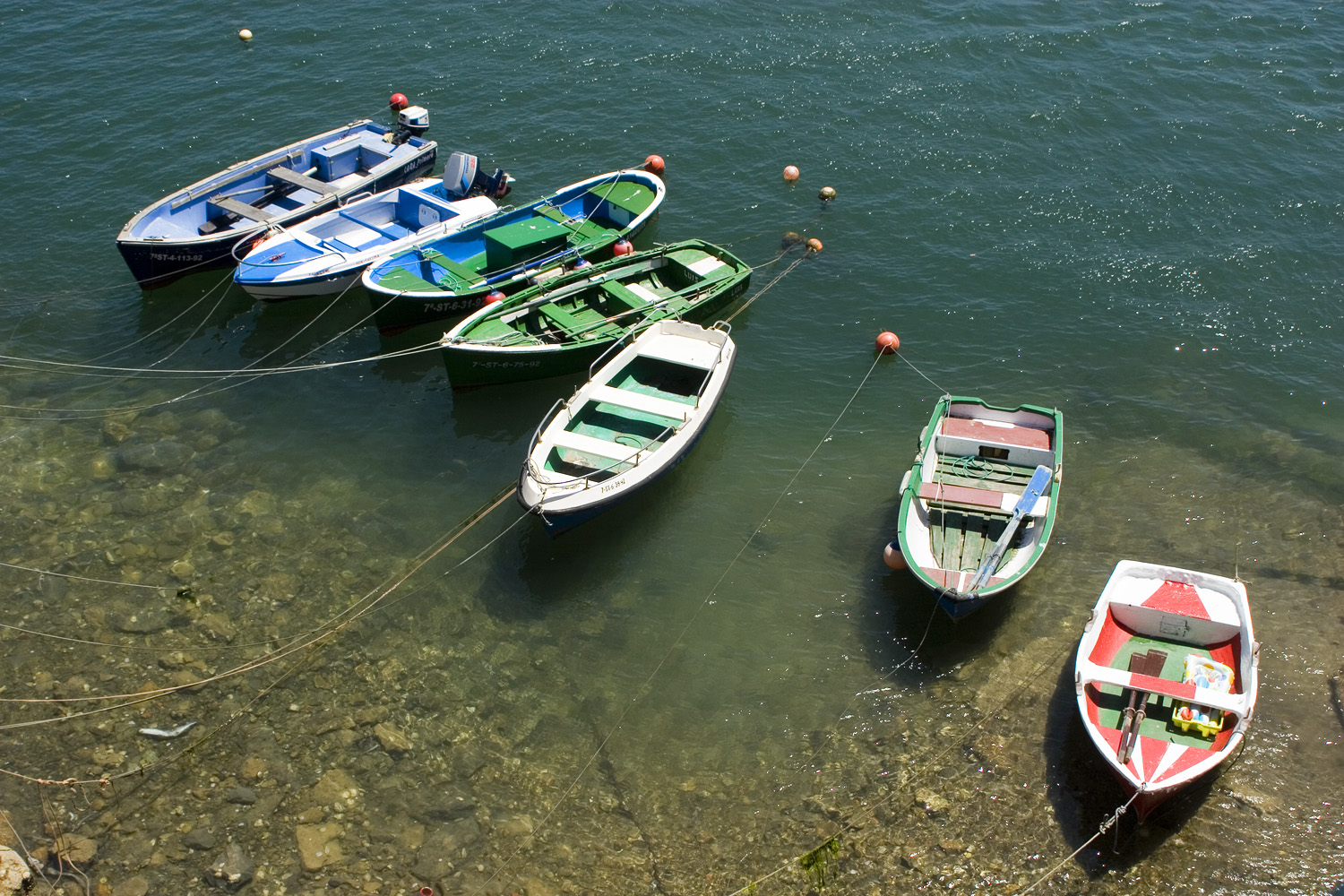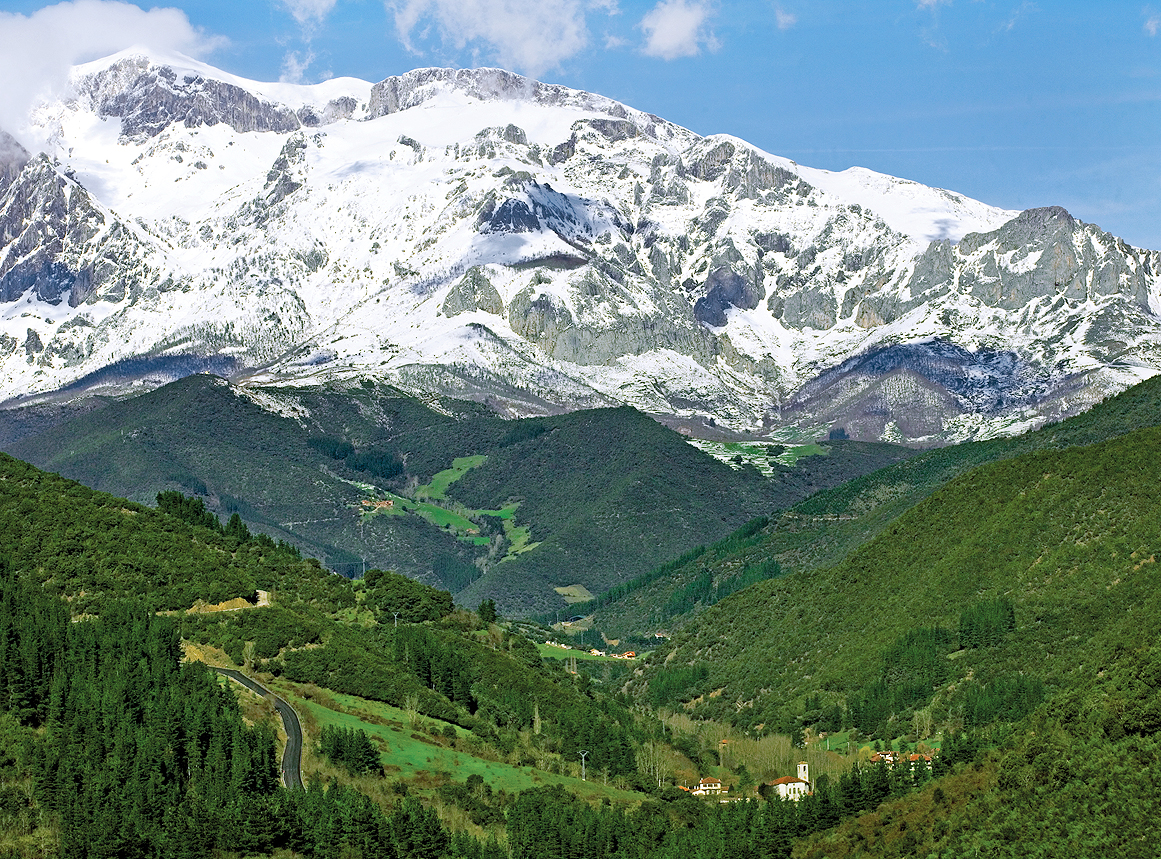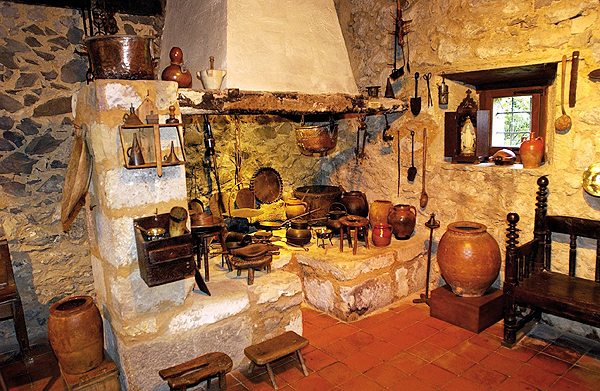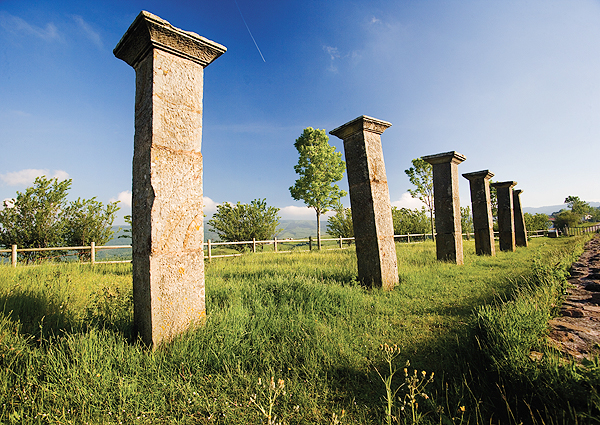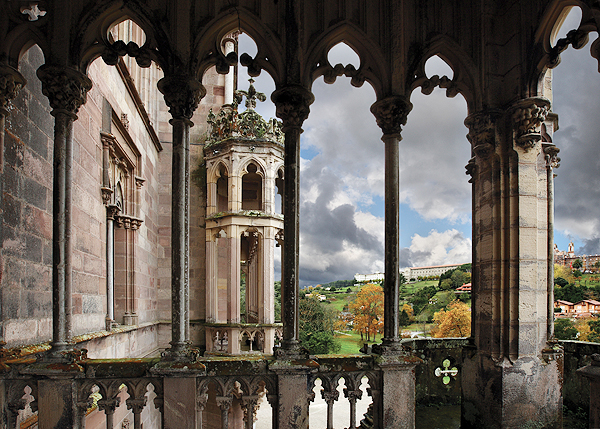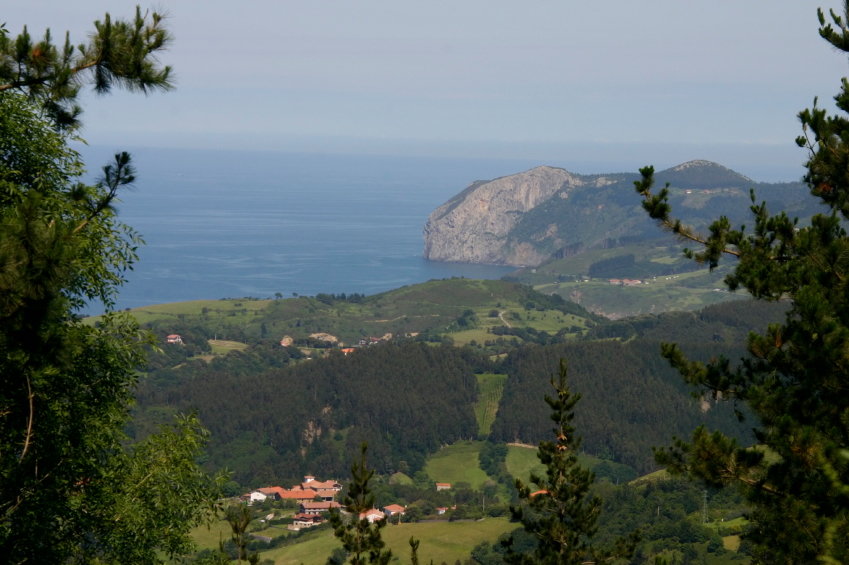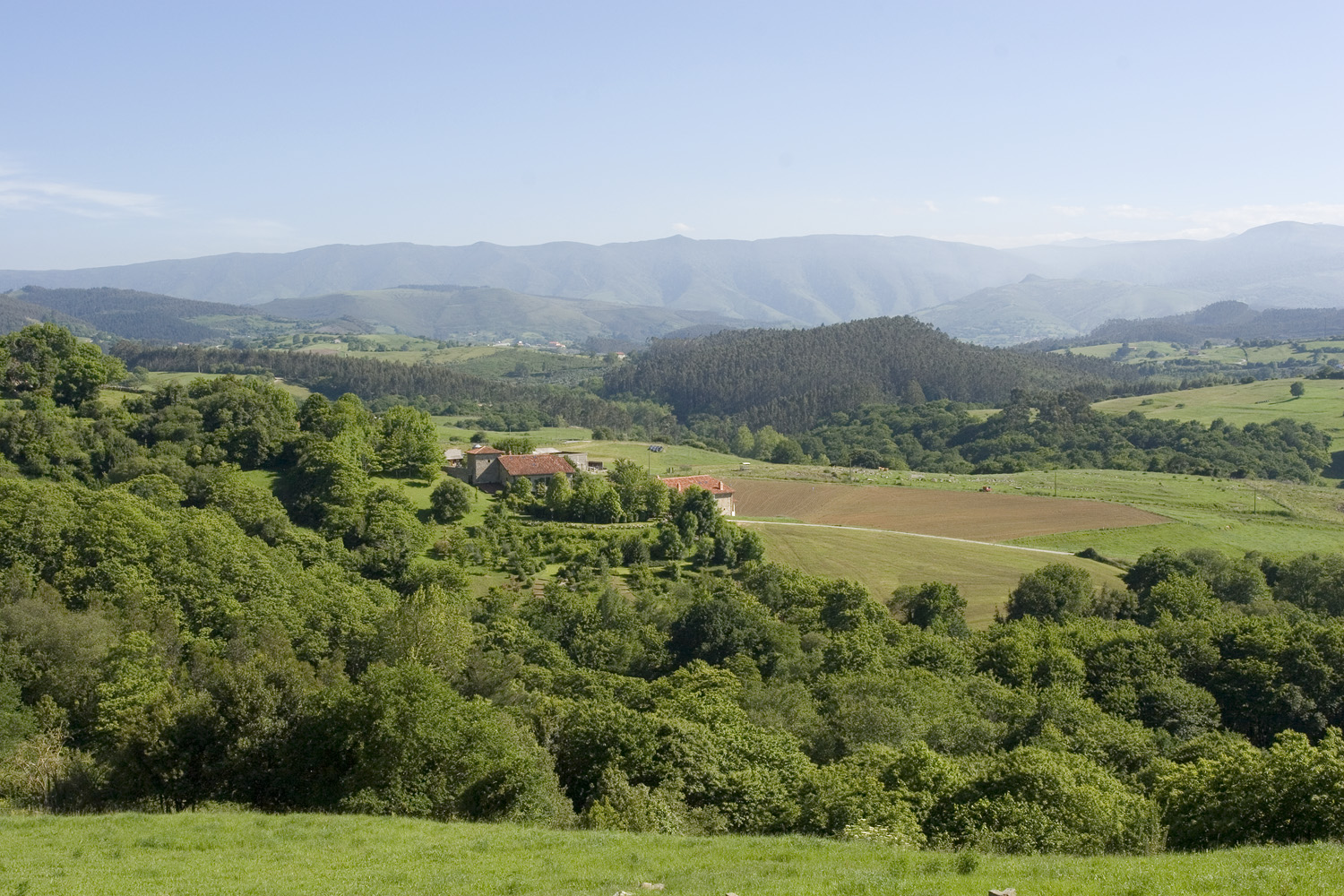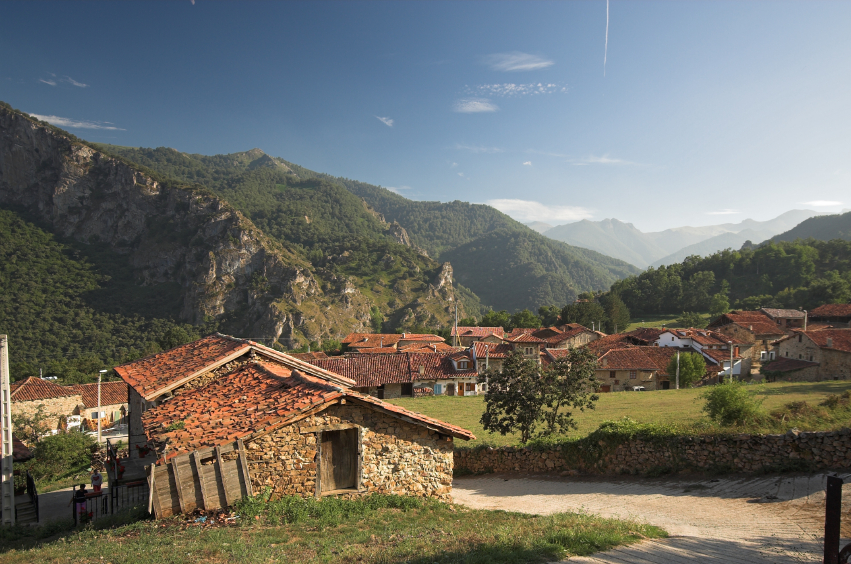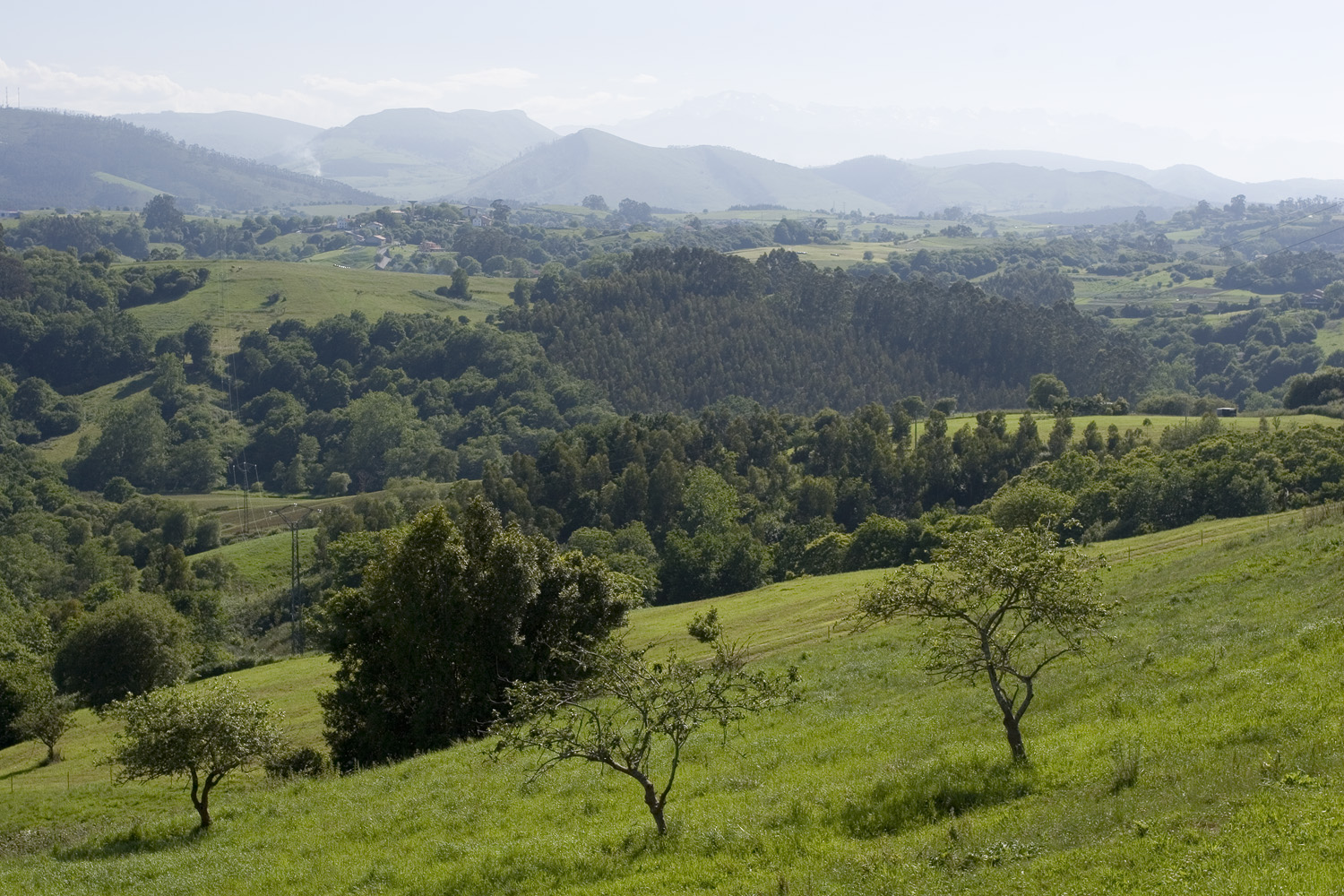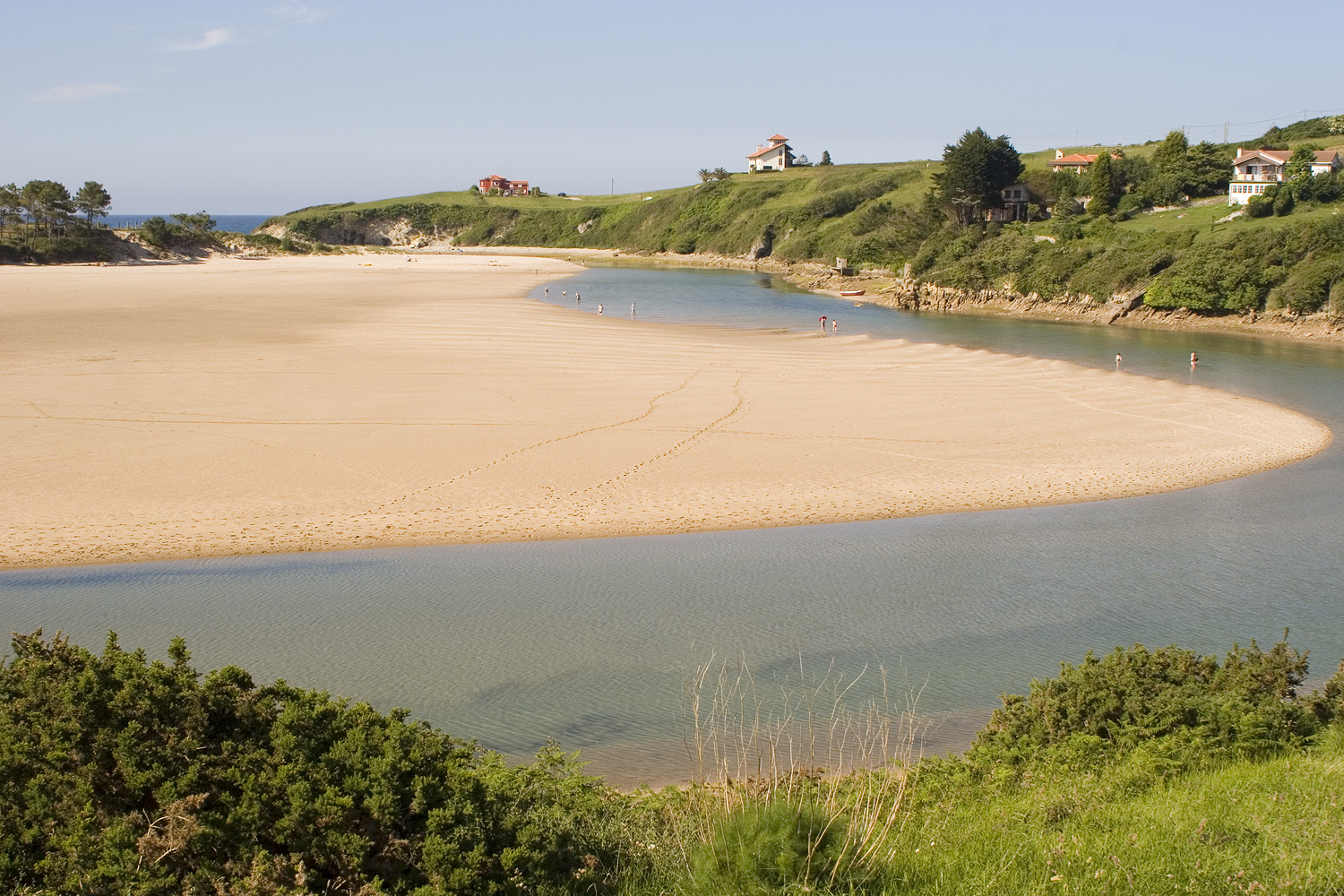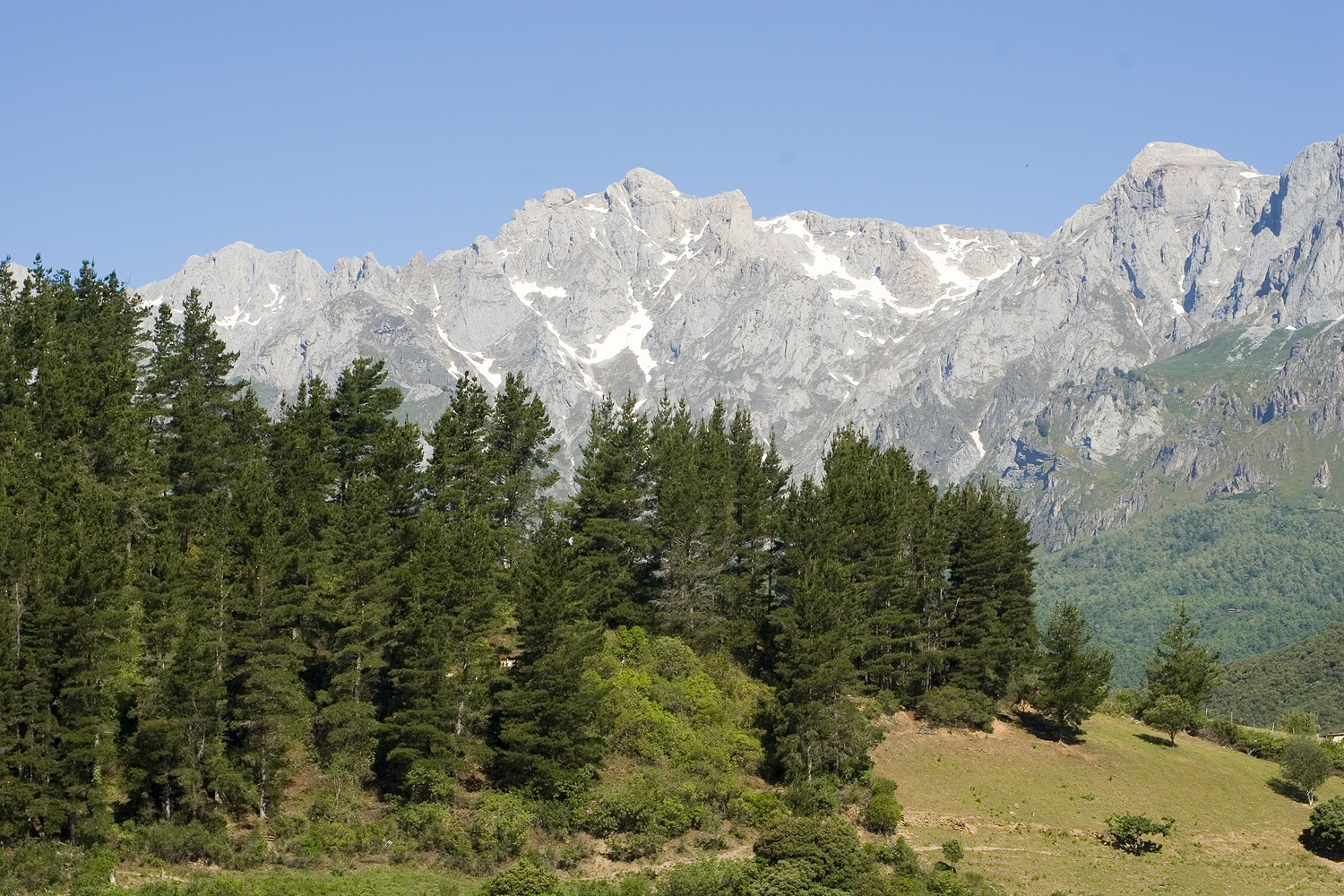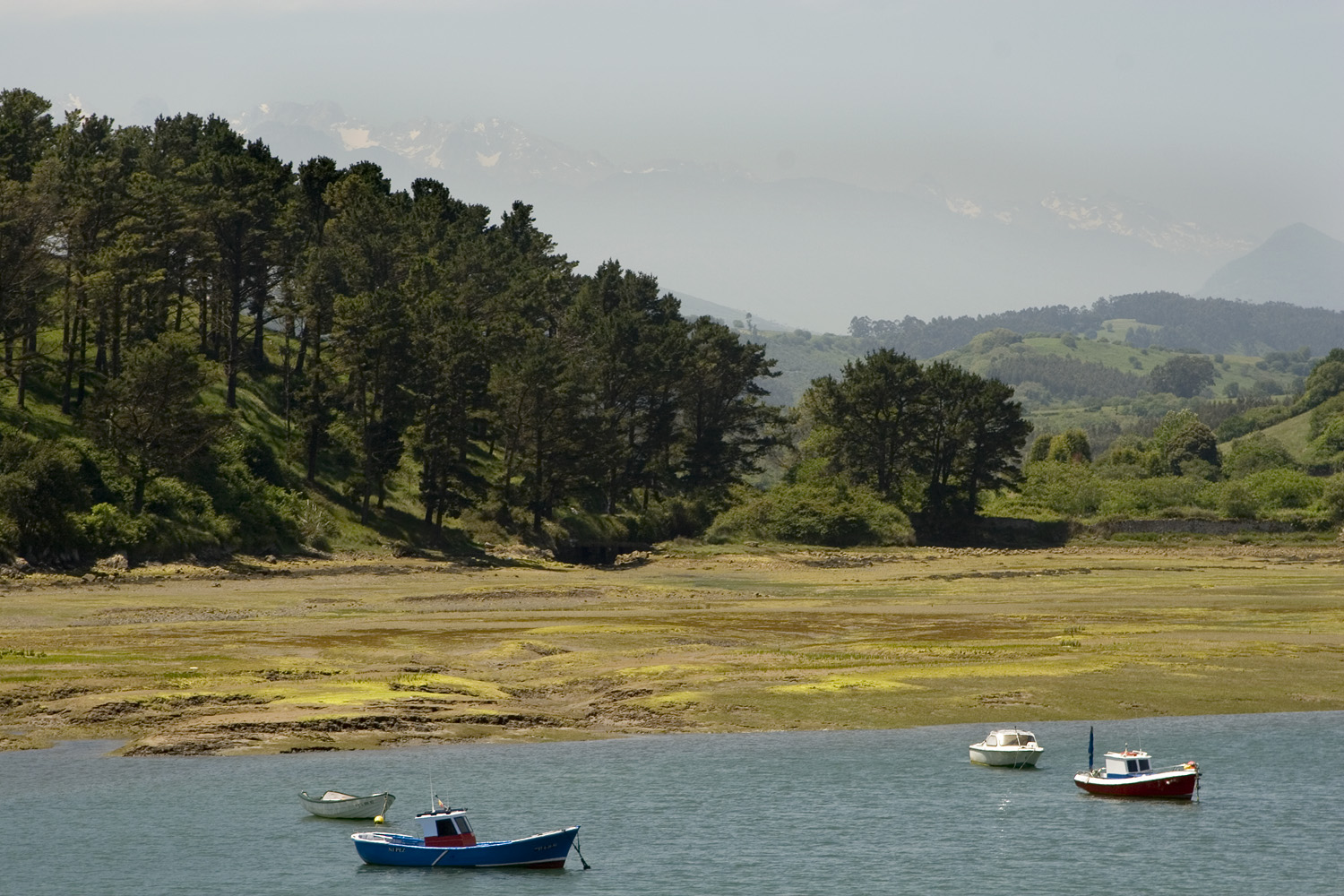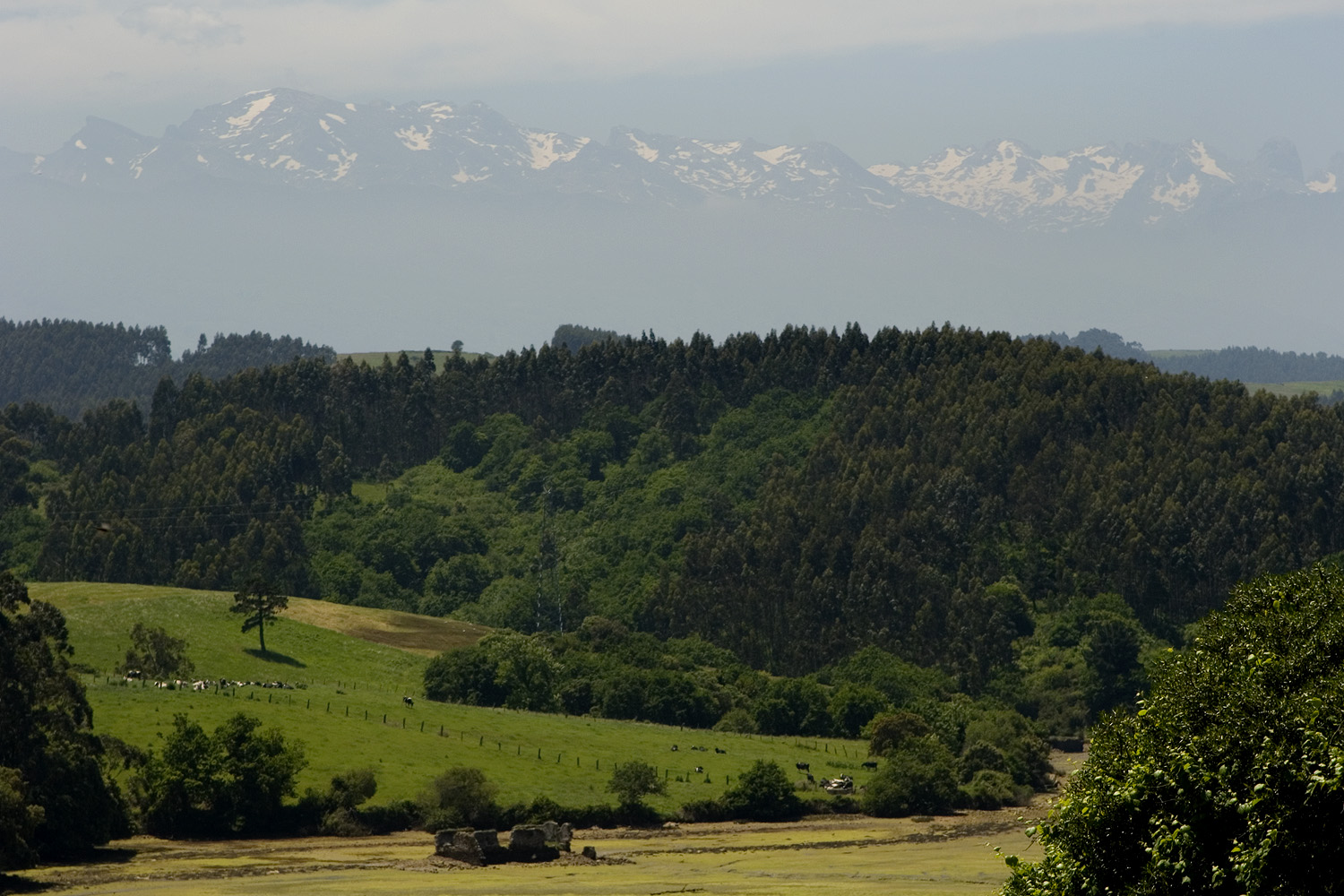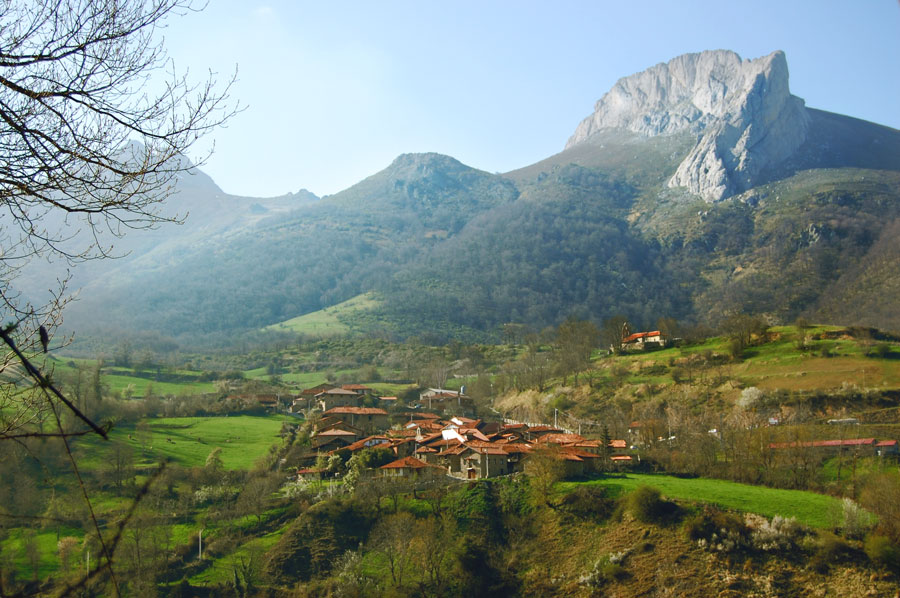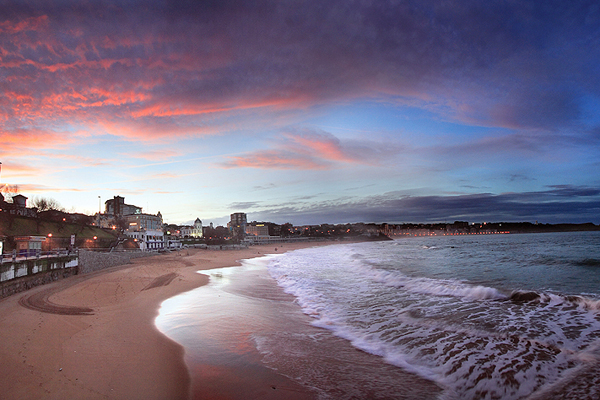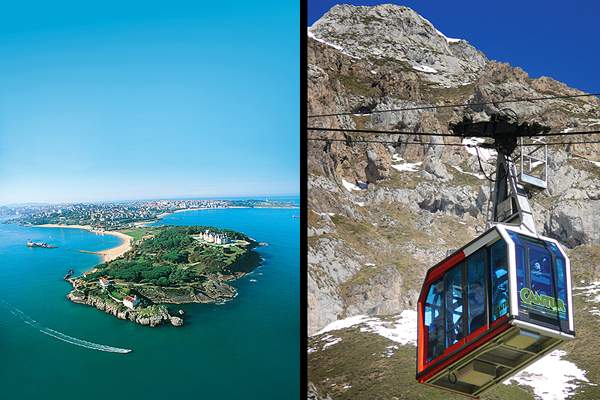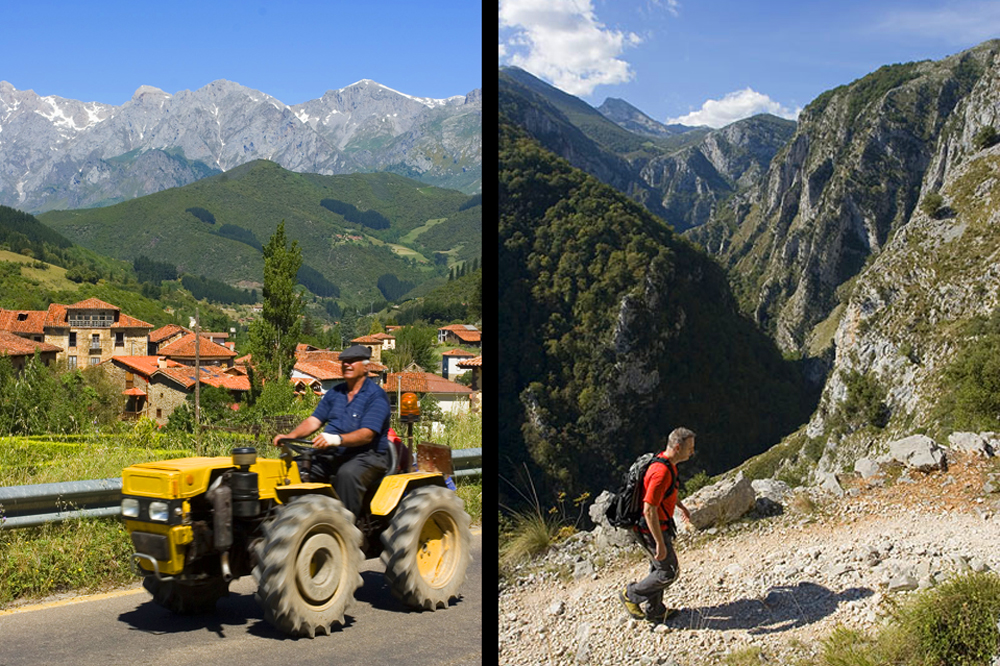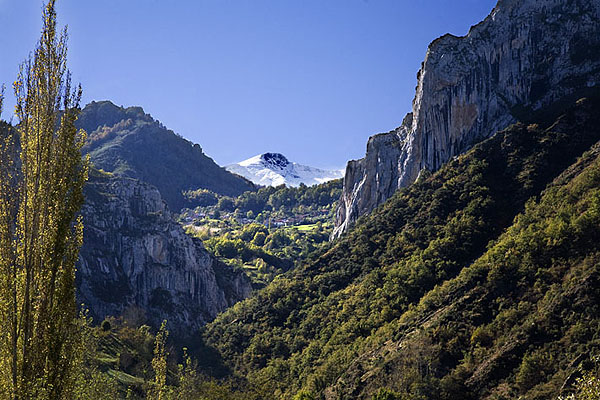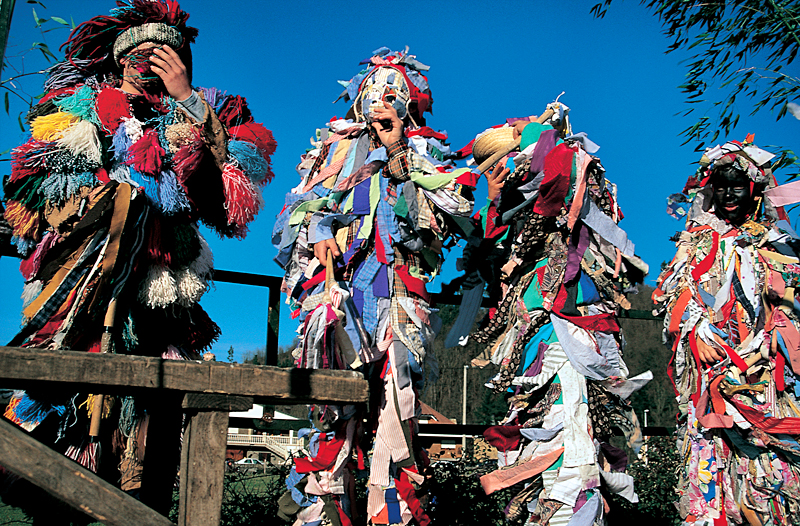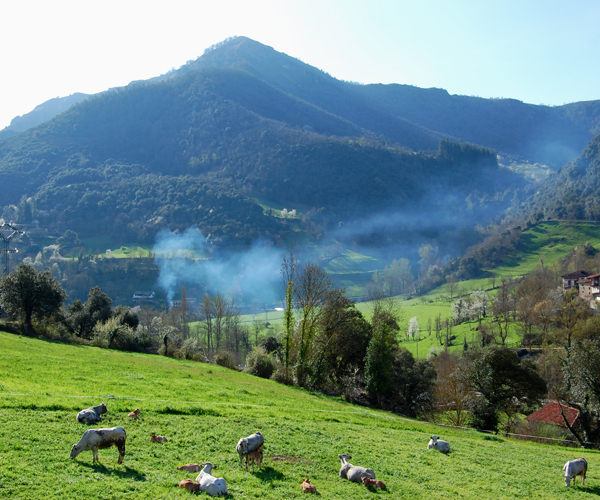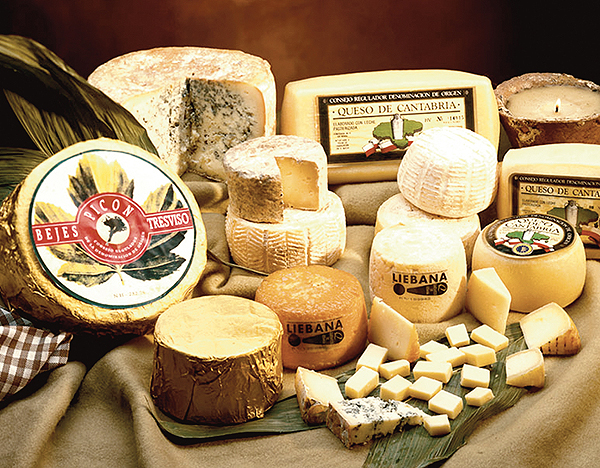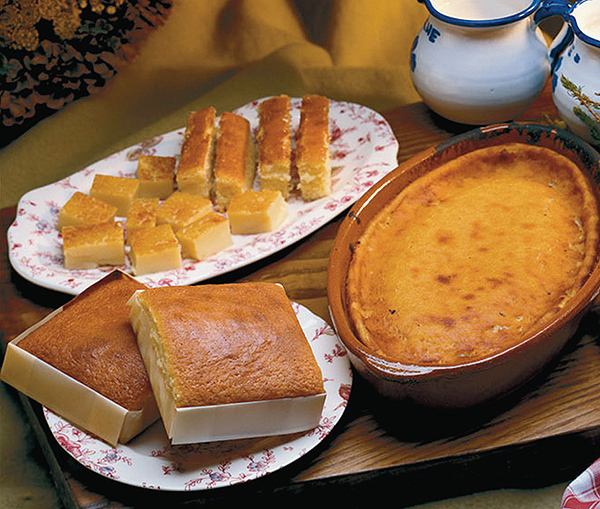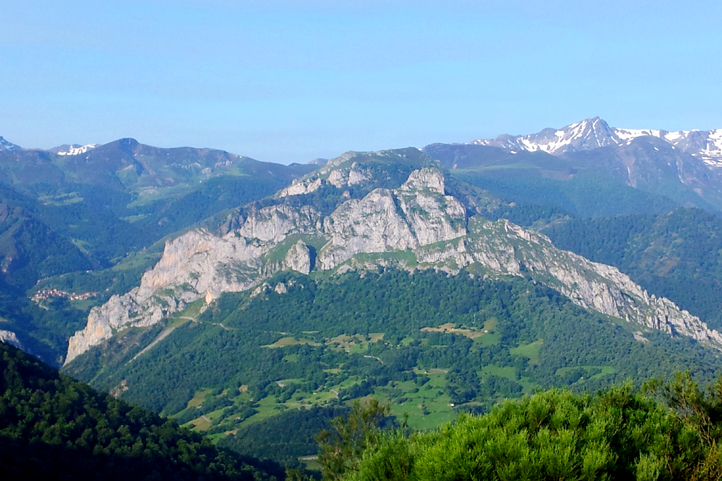In western Cantabria is one of northern Spain's greenest heartlands. For scenic vacations in Spain, especially walking holidays, this extraordinary area is hard to beat. The protected enclave enjoys a rare microclimate that is universally Mediterranean in the localities where Cantabria holiday cottages are to be found, and excitingly alpine at altitude among the peaks.
Even the drive here is interesting. From Unquera and the coast, the road into Liébana threads its way through the high gorge of the Desfiladero de la Hermida, following the River Deva as the landscape opens up to invite the traveller to view the mountains in all their splendour.
The sculpted geology gives protection to the area that makes it even more attractive for visitors to Northern Spain who want to avoid showery conditions elsewhere.
Four fertile valleys, their slopes thick with beech and mixed oaks, meet in the Liébana, where they converge at the regional capital of Potes. There are deep defiles and canyons through which swift, clear rivers run down to the sea.
At Pendes, near Cillorigo, is a forest of chestnut trees over a thousand years old. You can see Pyrenean chamois, birds of prey such as the pretty Egyptian vulture and herds of ibex. The National Park of Picos de Europa gives shelter to rare animals such as the capercaillie and the Iberian lynx.
Even more notably, it is the protected home of the endangered Iberian wolf and Cantabrian brown bear. Once you're here, you can simply rest back and soak up the views, eat out wonderfully well and trundle down to the coast for beaches and seaside towns. But is the hiker who will enthuse the most. The scenery is strikingly, stunning even, and there are trails galore. In the free Liébana Guide we send to holidaymakers, we make recommendations for walks and picnic excursions, as well as places to eat out.
Rear more about Liébana.
POTES
Potes (population 1,500) is Liébana's capital, the geographical centre of the area and gateway to many of the trails. It's an old market town – the Monday street market has been held continuously since the Middle Ages – with balconied houses and plenty of shops to pick up maps, guides and souvenirs. It's the one place that tends to get busy with hikers in August and you may wish to consider holiday cottages at one of the smaller, unspoilt villages such as Cillorigo or Barago. Activity agencies in Potes offer outdoor pursuits such as river rafting, climbing, mountain biking and paragliding.
FUENTE DÉ CABLE CAR
A popular day out takes you to Fuente Dé and the cable car up into the high mountains. Not for the faint-hearted, it climbs up to double the altitude to 1,450 metres, where it then drops you off to contemplate an extraordinary panorama of the National Park.
SAN VICENTE DE LA BARQUERA COASTAL TOWN
Convenient for holidays in Cantabria's Liébana, this is a very pretty and genuine fishing town. The old quarters including the street that goes up to the old church and castle is very quaint. People typically come to San Vicente to eat fish or seafood in one of its lively bars or popular restaurants, but the beach is exceptional for the impressive view of the Picos de Europa in the distance. You can sunbathe swim in the sea, while fishing boats bobbing around, while gazing at snow on the far-off peaks: quite spectacular.
OYAMBRE COASTAL NATURAL PARK
Alongside San Vicente de la Barquera are the sand dunes and protected natural beaches of Oyambre. Bear in mind that in August this area will be very busy, so if you want a quieter beach, we suggest you go from the actual town of San Vicente and the beach (a quiet cove, really) called Playa La Fuente (known by the locals as Playa de la Nuclear).
BEACHES IN WESTERN CANTABRIA
There are many other sandy beaches to choose from along the Cantabrian coast on the Bay of Biscay. Just east of San Vicente de la Barquera and Oyambre are the sandy strands of Valdaliga and Comillas. Take the coast road west into Asturias and you'll find plenty more.
SOPLAO CAVES
El Soplao, half an hour south of coastal San Vicente de la Barquera, offers a terrific cave experience. Here it is nature not man, that creates the spectacle in the form of extraordinary speleotherms throughout 17 miles of galleried caves. Pass through the immaculate white stalagmites of the Gallery of the Ghosts and the colourful Gallery Genesis, or peer into the Gallery of the False Floor. There are 17 kilometres of cave in total. Two different types of visit take you inside either on an old mining train and then by foot to one of the largest chambers; or a longer and more exciting tourism-adventure visit on foot (12 years and over), for which you are provided with boots, overalls, helmet and lamp. Visit elsoplao.es
THE FEVE TRAIN
A narrow gauge railway, more a leisure activity than a means of transport, runs along the Cantabrian coast and some points inland. It's proven to be quite popular with Rustical Travel clients who have told us how much they like the cheap and reliable train service along the coast from Unquera in the west to Santander in the east. A different to way to enjoy the natural beauty of the area. FEVE timetables & route maps are available on the national rail operator's website renfe.com
SAJA-BESAYA NATURAL PARK
The Picos de Europa aren't Cantabria's only mountain reserve. Easily reached from Alto Campoo, which offers skiing in winter and panoramic views from the Fuente de Chivo look-out point. Those fancying high altitude walking in summer months can take the ski lifts up into the peaks and trek from there. Summer downhill biking from the resort is also popular. This expanse of Cantabrian mountains and valleys is rich in rivers. Spain's second longest river, the Ebro, which flows out into the Mediterranean 910 km away, has its source here.
Argüeso Castle in the Alto Campoo is a medieval castle which tops a hill with views of often snow-topped sierras.
Old woodland imposes its own atmosphere and peace on the area around Abiada, where you will find El Abuelo (The Grandfather), a thousand year-old walnut tree with a girth so great it takes four people to hug.
PUENTE VIESGO
Also well situated for Saja-Besaya and half an hour south of Santander is Puente Viesgo. This lovely village lies in beautiful countryside. It is rightly famed for its prehistoric art in the cave complex at Monte Castillo. The paintings and drawings of animals in four caves are, at up to 30,000 years old, not only considerably more ancient than the world-famous Altamira (below), but you can see visit the caves and see the originals.
SANTILLANA DEL MAR & ALTAMIRA CAVES MUSEUM
An easy drive from Puente Viesgo takes you to Santillana del Mar, a living museum of a medieval village and the nearby Altamira Caves, where Palaeolithic cave painting reached its apex. The artists experimented with charcoal, ochre and other pigments to create colourful, dynamic representation of animals, including herds of bison. Their handprints greet us from 15,000 years ago. As visits to the World Heritage Site caves have been suspended to preserve the fragile paintings, a replica cave exhibition depicting the same images has been created at the site: Museo de Altamira.
SANTANDER
Much more than the entry point for visitors to Cantabria by plane and ferry, this elegant town on a curved bay was for many years the resort of choice for Spanish royalty and today you can visit King Alfonso XIII's summer palace and the Grand Casino. A 30-minute walk from Santander train station (by the ferry terminal) brings you to the Maritime Museum of Cantabria with its giant aquariums. See Food and Drink (below) for a recommended restaurant nearby.
SANTANDER BEACHES
Continue from the Maritime Museum and you'll come to two beaches, known as Playa de los Milagros and Playa de los Bikinis. Round the headland is Santander's main beach, the impressive Sardinero. On the other side of the bay is the fine golden sand of Somo beach. Sardinero and Somo are good for swims and surfing. Continue east along the coast from Somo to Playa de Langre.
You can cross the bay to Somo beach on a ferry run by Los Reginas, who also offer boat excursions around the bay or upriver. To the west of Santander, we also recommend Playa de Covachos.
CABÁRCENO NATURE RESERVE
Exotic living creatures are collected together in Cabárceno Nature Reserve, a well-designed safari park of some 750 hectares just ten minutes from Santander. Elephants and tigers, lions, kangaroos and giraffes all wander freely within the park's boundaries. Anyone who has set their heart on seeing a Cantabrian brown bear, extremely difficult to spot in the wild, can see them here.
PASIEGOS AND ASÓN VALLEYS
The best of secret Cantabria? These magnificent valleys south of Santander are Green Spain off the beaten track. Rural retreats and superb drives within easy reach of Santander and the coast of eastern Cantabria. The three Pasiegos valleys each have something special: Cábarceno Wildlife Reserve in Pisueña Valley, Puente Viesgo in Pas Valle and the architectural splendour of Liérganes village in the Miera Valley. The little FEVE train runs in this area to La Cavada village.
The Asón valley's highlight is a high waterfall in a beautiful landscape, driving south from Arredondo.
SANTOÑA
On the coast east from Santander, Santoña is surrounded by a unique Natural Park of marshlands. Santoña is well known for its delicious anchovies.
BEACHES IN EASTERN CANTABRIA
East of Santoña is the huge and popular Laredo beach. A prettier and more natural setting is offered by Playa de Noja, west of Santoña.
BEST OF THE REST
Santo Toribio Monastery (Liébana)
You don't have to engage in outdoor pursuits to enjoy Liébana. The more leisurely may wish to stroll charming hamlets like red-roofed Piasca with its fine Romanesque church, or to visit the Santo Toribio Monastery, which claims to hold pieces of the cross Jesus died on (the Lignum Crucis), making it an important pilgrimage destination. The monastery is run and inhabited by the Franciscan Order of monks. Entrance is free of charge, but with a timetable of visits according to the time of year.
Camino de Santiago
The best-known pilgrimage trail is the one to Santiago de Compostela in Galicia. One of the most ancient routes passes through Cantabria following the coast. Pilgrims walk a green, refreshing trail that takes in architectural gems, holy sites and the sea.
Pas Valley "Via Verde" cycle route
When a pretty length of the FEVE train railway fell into disuse, it was rescued by cycling enthusiasts to make a wonderfully level "eco path" through the gorgeously green Pas Valley south of Santander. The old rail track, which was in operation between 1902 and 1973, is now gone and locomotives have been replaced by friends on bicycles and skates, who have all or part of the 34-km stretch between Astillero and Ontaneda.
Battle of the Flowers
If you're on holiday in Cantabria the last week in August, you can combine a trip to Laredo beach with Laredo's annual "Battle of the Flowers." Rather than a combat with chrysathemums, the battle is a challenge to see who can make the best float in the parade. Thousands of people come to see the floats, entirely covered by creative garlands. The million and a half flowers which go into the creative celebration are all grown locally on the Cantabrian coast.
Castro Urdiales
Eastern Cantabria borders with the Basque Country, but before we reach there we come to Castro Urdiales and its harbour. Once a Roman colony under Vespasian, the fishing port today is all about sardines and anchovies, which are canned here. Of special interest are the Gothic Church of Santa María de la Asunción, the old fortress-lighthouse of Castillo del Faro, a number of caves, and a Roman milestone mentioning the Emperor Claudius.
FOOD AND DRINK
Cantabria is a land rooted deeply in tradition, which you will see expressed in dress and dance at local fairs, but also in the fine culinary style. Cheeses, Boletus mushrooms and beef are outstanding. The rewards of a healthily watered land, in contrast to sun-parched Andalucia, are plenty and some of them will end on your table, since fresh farm produce is the staple in Cantabrian gastronomy.
Hearty stews and salads and a variety of cheeses alternate with fish and seafood from the nearby coast. Food is taken seriously here. There are weekend country inns where kitchens are constantly busy with clanging pots, hurrying plates out to hungry wayfarers.
Tudanca beef, lamb, wild salmon are as common in mountain dishes as lima bean and tender chickpea soups. Try sirloin with Tresviso cheese, hake in parsley sauce, chorizo, anchovies, squid with onion, and Pasiega cheesecake. Tresviso – or Picón Bejés – is a blue cheese matured for months in local limestone caves, presumably ones chosen for their absence of bears. Orujo de Liébana, made from wine-pressings, is the local, fruity brandy.
Here are Cantabrian dishes in Spanish with their English equivalents:
Cocido lebaniego – Liébana mountain stew made with chickpeas, potato, collard greens, and chunks of bacon, chorizo, ham and black pudding.
Guiso marinero – Seaman's stew, commonly of fresh tuna, potato, onion, peppers, tomato and flavoured with chili pepper, white pepper and white wine. In San Vicente de la Barquera, this dish is called sorropotún. In Santoña y Laredo, it's called marmite (sic).
Variations on the guiso marinero are:
Merluza en salsa verde – Hake in parsley sauce
Calamares encebollados o en su tinta – Squid with onion or in its own ink
Bocartes - Anchovies
Almejas a la cazuela – Clams
When it comes to fish dishes, Cantabria has shines more for quality and variety than quantity. You're most likely to find merluza (hake), rodaballo (turbot), sardinas (sardines), bonito (tuna), lubina (sea bass), rape (angler fish) and rabas (fried squid). In Santoña, which presides over marshes on Cantabria's eastern seaboard, you will eat the best anchoas (anchovies) in all of Spain.
There's less seafood than elsewhere on Northern Spain's Atlantic coast, where Galicia is the country's main producer, but expect centollo (spider crab), langosta / bogavante (lobsters), almejas (clams) and nécoras (small crabs).
River fish such as trucha (trout) and salmón (salmon) are also common.
Hearty stews and salads and a variety of cheeses alternate with fish and seafood from the nearby coast.
Cantabrian cream cheeses (queso de nata) are made from cow's milk. Local cheeses in Liébana, typically strong in flavour, may be made from sheep, cow or goat's milk. There are three main types. Picón is a spicy cheese, of which the superior comes from Tresviso. Ahumado is smoky and we recommend the Aliva variety. Quesucos are little cheeses, of which we like the Lebeña.
The Pasiego valleys produce their own fresh cow's cheese (queso pasiego fresco).
Cheeses are nicely complemented by sidra (apple cider), which is a popular drink in Cantabria if not quite as deeply embedded in local culture as in neighbouring Asturias.
Cream cheese also features in desserts, where it may be served with honey and walnuts or as cheesecake (quesada pasiega). Perhaps the best-known Cantabrian dessert are the sponge cakes known as sobaos, but there are other local specialities such as almond cake or the frisuelos (pancakes) of Liébana.
The one drink that is authentically Cantabrian is the orujo de Potes, a digestive liquor made from pomace. For wine in restaurants, you will find reds from elsewhere in Northern Spain: La Rioja or Ribera de Duero, and fruity whites from Galicia: ribeiro or albariño.
